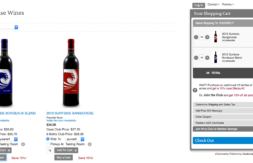Meaningful Metrics of Email Marketing

Email’s greatest power lies in your ability to gauge exactly what’s working and what isn’t—provided you use the proper metrics. In an effort to continuously improve your email marketing campaigns, it is important to implement key performance measures and understand how to use them effectively. Below are 4 types of meaningful metrics worth measuring:
Process Metrics –are used to understand how individual elements of your email program are contributing to your overall success. They are diagnostic in nature and should be tracked not only campaign by campaign, but also by individual list subscriber and segment like gender, age, and geographic region. They are referred to as process metrics because they measure essential actions that are part of the response process in email, and the success of basic processes for sending and managing email. Before you begin, be sure to select a common denominator (such as total sent, total delivered, or total opened) to ensure consistent comparisons and reporting. These process metrics include:
• Delivery or Bounce Rate – Usually the first thing anyone wants to know when sending email is if it got there. Deliverability is the percentage of total email addresses which successfully received the message sent. The opposite of deliverability is known as bounce rate and should never be above 10% which signals list quality issues. Example: 98k delivered/100k emails sent = Delivery rate of 98%, Bounce Rate of 2%
• Unsubscribe Rate – indicates list attrition over time by measuring how many people opted out compared to the number of emails successfully delivered. Like bounce rates, unsubscribe rates should be low. Pay special attention to how many people unsubscribed right after your first regular message was received. Example: 2k unsubscribes/98k delivered = Unsubscribe Rate of 2%
• Open Rate – indicates identity recognition, subject line effectiveness and degree of trust by measuring the number of opens compared to the total number of emails successfully delivered. It is important to note that opens do not register when messages are received via text instead of HTML or when images are blocked so this metric can be difficult to calculate effectively. Example: 50k opens/98k delivered = Open Rate of 51%
• Click-Through Rate (CTR) – indicates offer effectiveness, targeting appropriateness, and/or message/design resonance. CTR is the percentage of total email addresses from within which a recipient clicked on a link, divided by the total number of email addresses successfully delivered. Click-to-Open Rate (CTOR) is also helpful. Example: 30k unique clicks/98k delivered = CTR of 30.6% | 30k unique clicks/50k opens = CTOR of 60%
• Conversion Rate – measures sign-ups, opt-ins, downloads, purchases, contact initiations to indicate landing page efficacy, information relevance, and ease of registration or purchase. Conversion rate is the percentage of total completed calls to action resulting from your email campaign, divided by the total number of emails delivered. Example: 5k conversions/98k delivered = conversion rate of 5.1%
Now that you know the basics of measuring email response, the next question is what other valuable actions and outcomes does email influence and how do you measure what they are?
Influence Metrics – the total forwards, shares, comments, reviews and other actions subscribers take that impact overall response. Remember to encourage sharing with clear calls to action. Use social monitoring tools to track posts and comments about your product and/or products. Since other actions besides conversions may have measurable monetary value to you, assign a weighted ($) value to each action that is meaningful to your business. Influence actions can and will affect conversion so make sure you’re tracking and calculating the Total conversion rate from email, not just direct conversions from subscribers.
Feedback Metrics – the total sum of complaints, frustrations, problems, critiques, questions, and praise generated. Be sure to account for complaints and inquiries sent via return email, activity initiated through your feedback form, updates to subscriber profiles and social media connections. It is a good idea to implement a plan for managing feedback.
So how do we measure email’s impact on the bottom line?
Contribution Metrics – a strategic measure of your email program’s performance against your organization’s overall business and marketing goals. These include measurements like return on investment (ROI), average order value (AOV), and lifetime customer value (LTV) among others. To calculate contribution, total the cost involved (including copy and creative design, landing page design, testing, etc.), then count response (clicks, conversions, unsubscribes, bounces) to determine whether your campaign generated a positive return.
Remember the fundamentals, develop benchmarks, look beyond raw numbers, and focus on different key performance indicators (KPIs) for different objectives. Good Luck!














